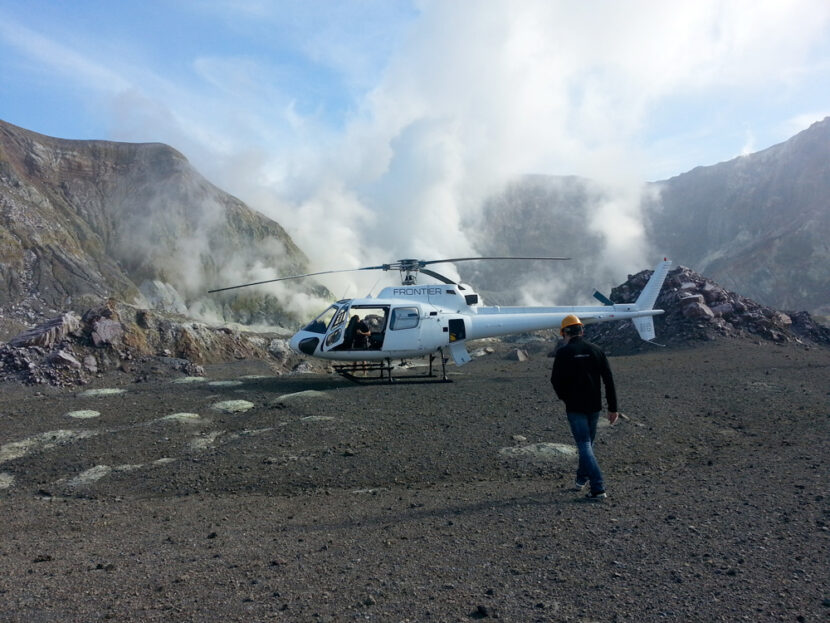I was nervous going on my first helicopter ride. My Dad always hated riding in helicopters and I was worried that maybe his fears had been passed on to me.
Our FAM guide re-arranged our itinerary so we could get to our ride early because a storm was coming in. They took our weights to makesure the helicopter was evenly distributed. We were given the rundown of what do if we go down over the water. We put on our advanced-looking life jackets. We walked towards our ride that was howling as it warmed up. We met our pilot who looked 17. None of this was helping.
I was locked in, not sure when to brace myself for lift-off. Then I realized we had already left the ground. We calmly lifted from the ground and swept across the grass as we ascended up in the air giving an amazing view of the beach.
Our destination came into view and ‘Little Ross’, our pilot, said through the headset, “There’s lots of smoke coming out of the island. It’s a good sign that it won’t erupt.” At this point I realized I probably should have been worried about the active volcano we were touring, not the short helicopter ride.
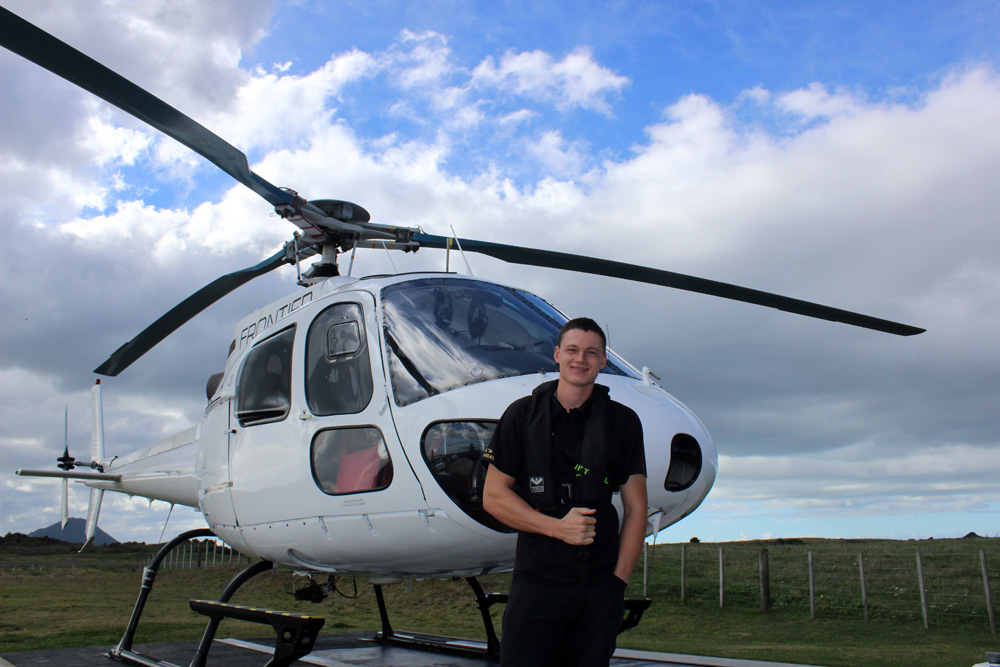
He may look young, but we all felt at ease with Ross in charge

View from the helicopter.
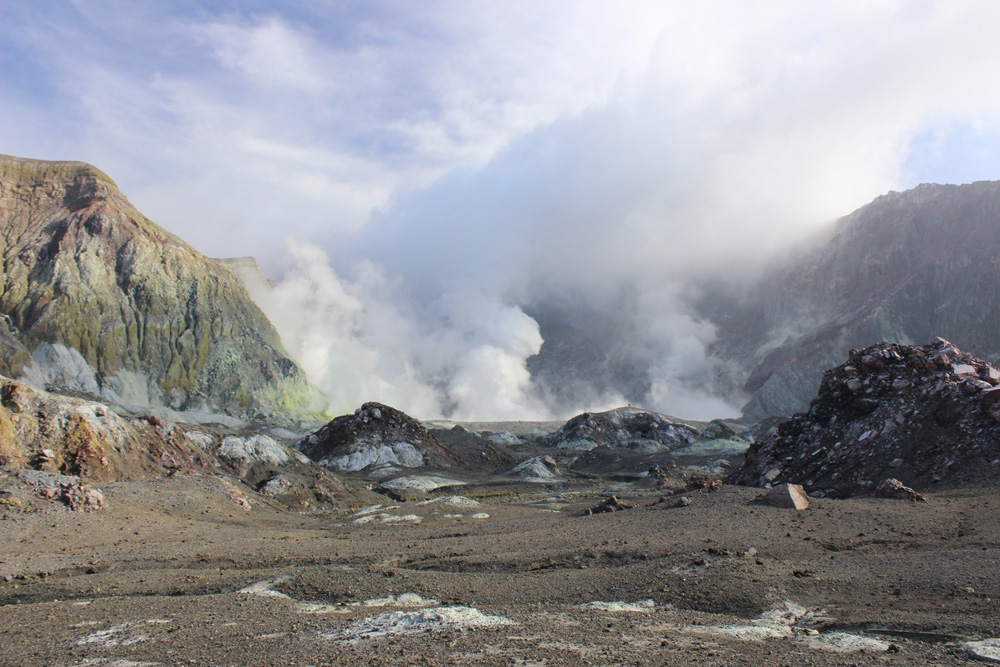
Smoke…a good sign!
White Island is off the east coast of New Zealand’s North Island and is currently the country’s most active volcano. The island is inhabited and is only home to a former sulphur mining station which was shut down in 1914 after 10 workers were killed when part of the volcano’s rim collapsed. Since then, the island has been privately owned and is frequented by scientists and tourists from around the world.
The first thing you notice on the island is how much you feel like you’re on another planet. The ground is grey with lots of craters bellowing yellow and white smoke and the ground has a spongy feeling as you walk around. One of the other journalists said we should be in spacesuits. I had to agree with him.
The other distinctive aspect of the island is the strong smell of sulphur. Our guides ‘Big Ross’ and ‘Little Ross’ recommended it for curing colds and coughs. They also warned us that it will eat away at everything. This was evident by looking at the former sulphur factory, which has almost beenclaimed by the sulphur itself, except for the wood, which looks brand new. We were also shown how quickly a copper coin can be cleaned by simply dipping it in water. Breathing masks are provided if the smell becomes too much.
My favorite part of the tour were the colours and the amazing contrasts. When you look into the major crater you see white smoke moving across a lake of distinct green. On another part of the island you have yellow craters bellowing out white smoke. By the sea you have dark orange rocks next to dark blue water. It’s a photographer’s dream.
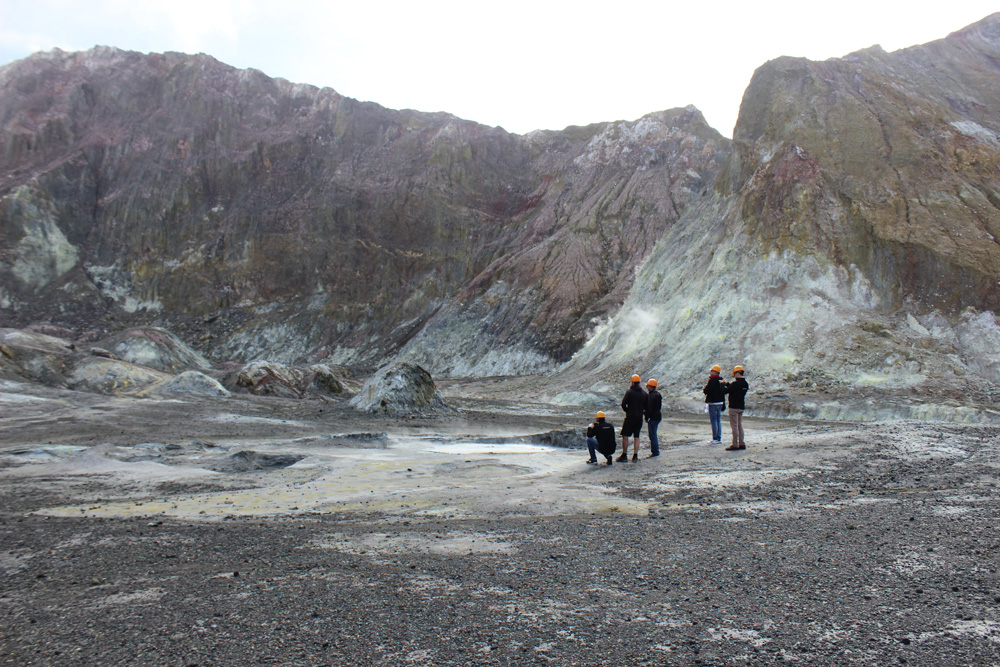
The landscape made me feel like I was in the movie Prometheus.
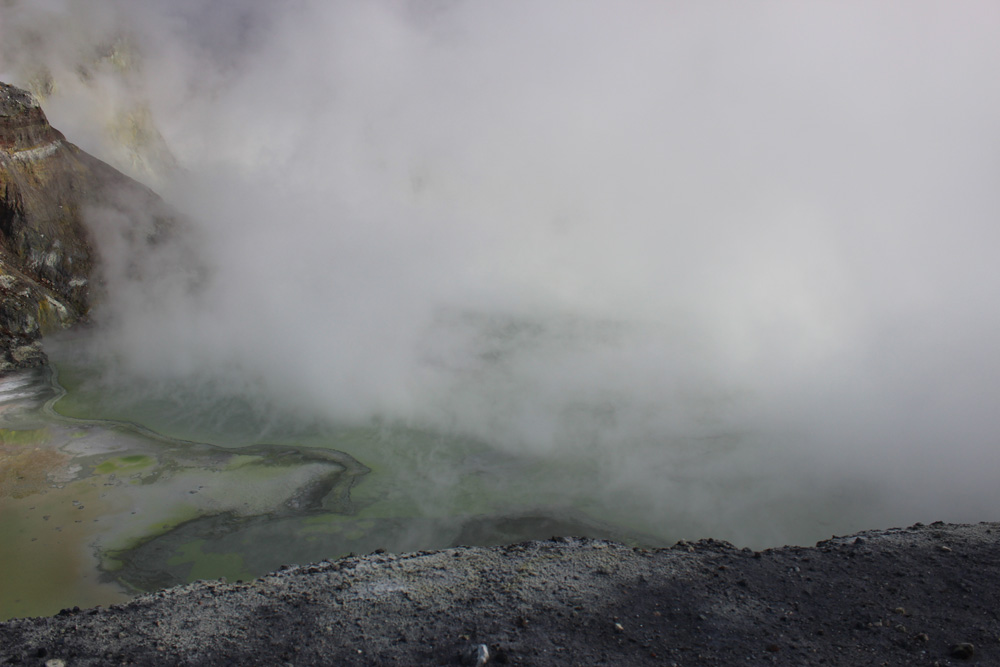
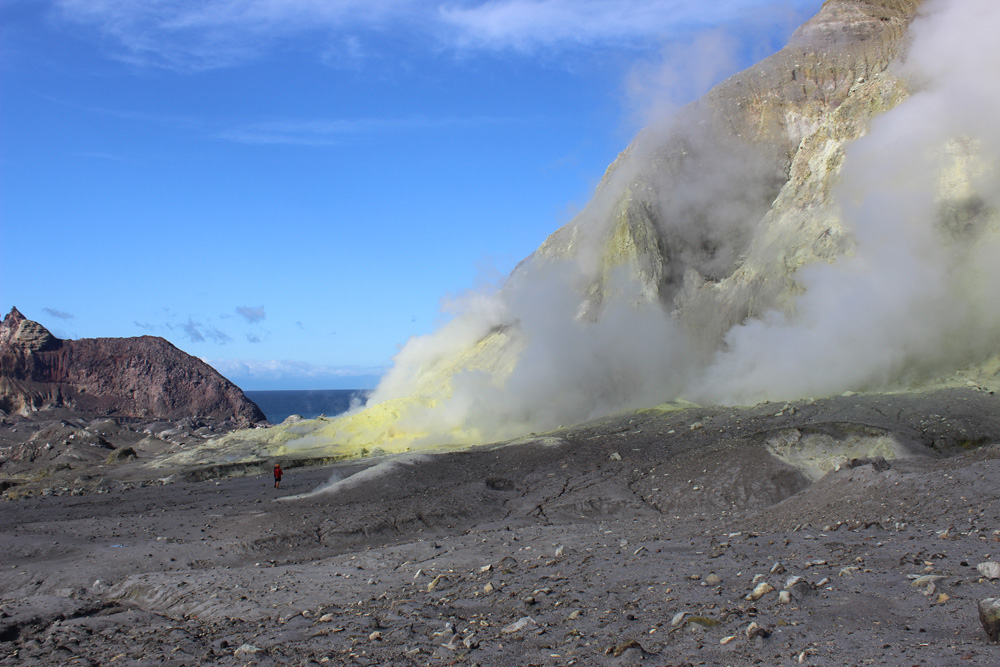
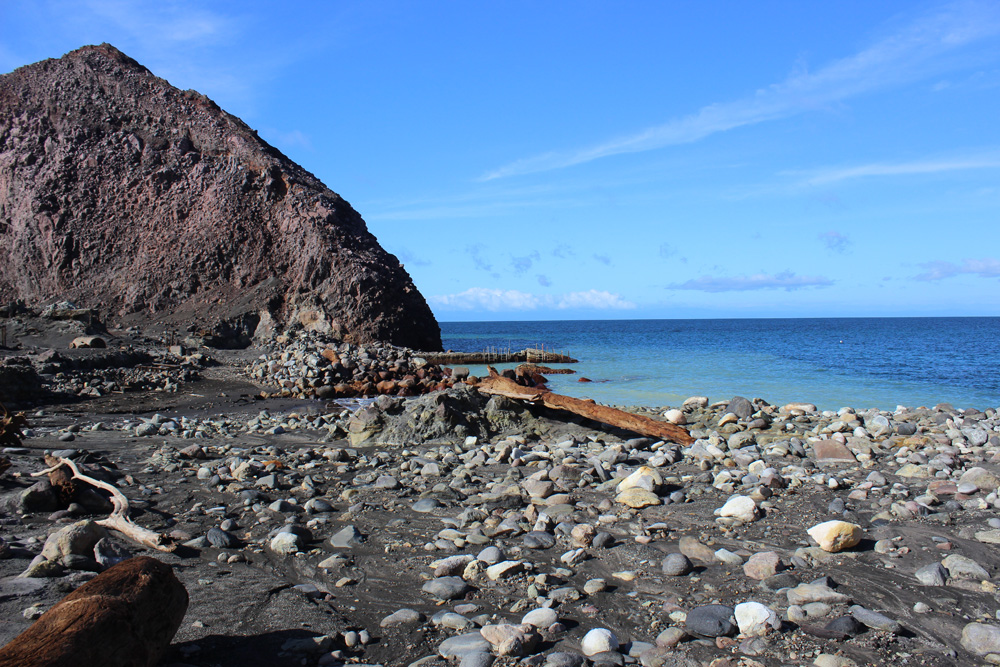
If you’re in the area, you might also want to consider doing a tour of nearby Moutohora Island (aka Whale Island), a nature reserve withmany rare plants and animals. One highlight is watching the grey-faced petrels (more commonly called muttonbirds) return to the island.Thousands of muttonbirds return after days at sea looking for food. For some reason they never learned to land and prefer to circle before nose-diving into the trees. It’s amazing watching the sky fill up with birds circling the sky contemplating their big dive. You’re given a hard hat for this experience too.
I did a lot of memorable tours in New Zealand. As the new campaign for the country goes, ‘Every day a different journey’. This was certainly true with the range of activities we got to do, but the tour of White Island is what stuck out the most for me. Plus, I finally found out that I like helicopter rides.
Tours of White Island are by helicopter with Frontier Helicopters or by boat with White Island Tours (they also do tours to Moutohora Island).
For more information:
Frontier Helicopters, frontierhelicopters.co.nz/
White Island Tours, whiteisland.co.nz/
Bay of Plenty NZ, bayofplentynz.com/
